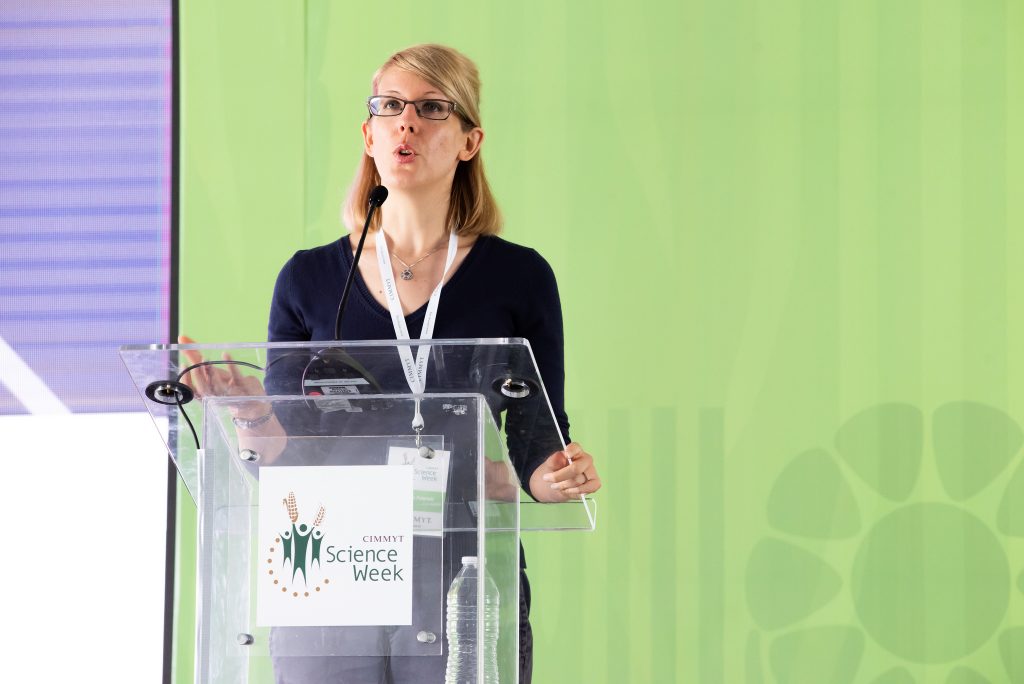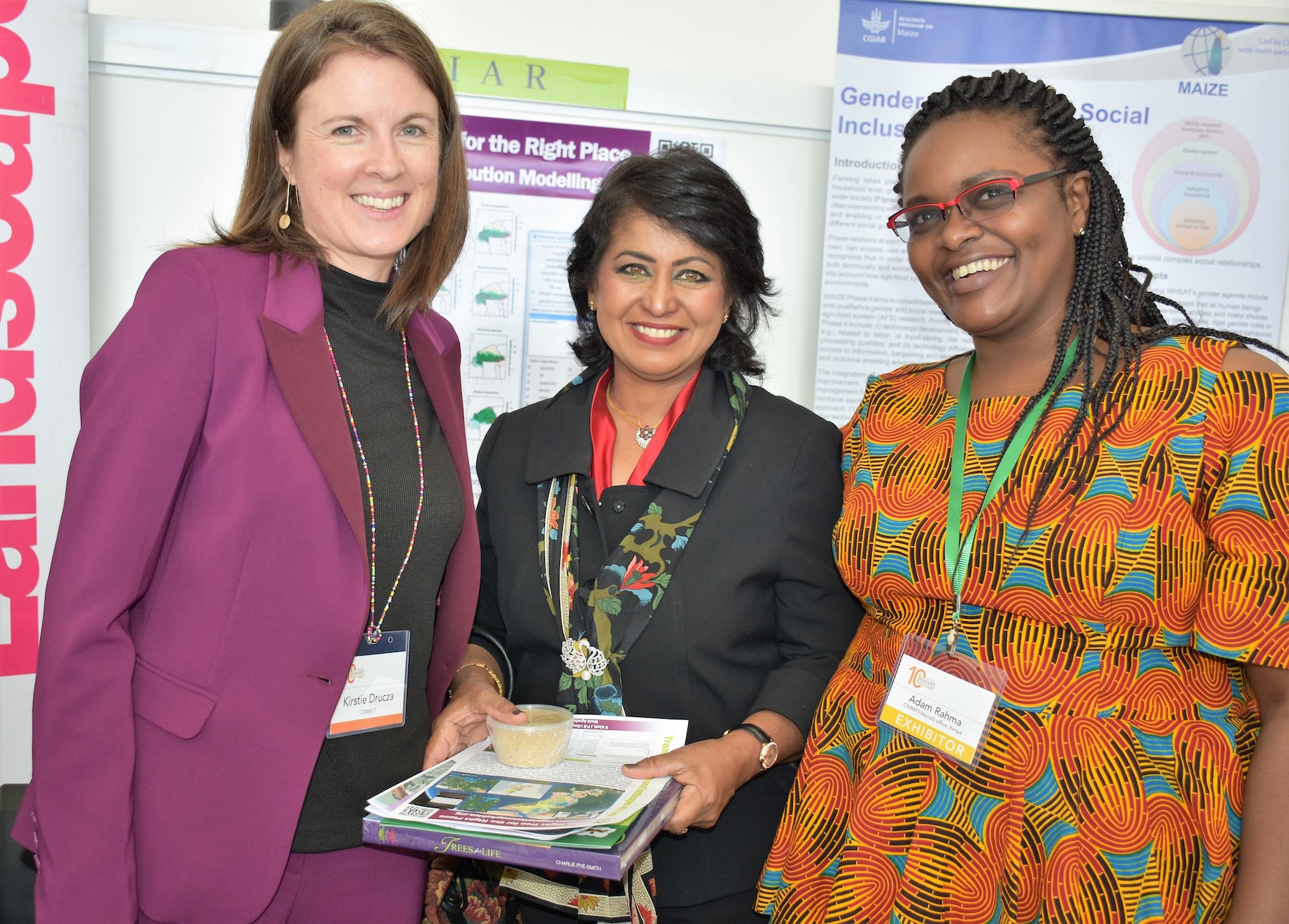At CIMMYT’s Science Week 2018, Nature Genetics Senior Editor Catherine Potenski spoke on how to publish plant genomics research that has broad, novel impact.

Having research that is high-impact is not only critical to doing excellent science that has meaning, but also a premier way to let the research community know what you are doing and reach a broader audience, according to Catherine Potenski, Senior Editor at Nature Genetics, one of the more than 70 high-quality academic journals of publishing company Springer Nature.
“Plant genomics is an exciting field that is a priority for Nature Genetics given climate change and other challenges,” said Potenski. “We look for studies with novelty, a genetics scope and resource value.”
Nature Genetics is highly selective and publishes approximately 200 papers per year. Potenski wants to make the editorial review process more productive and simple for researchers so they can share their best work.
“You should organize your paper to highlight the impact of the findings and write a cover letter that places your work in context, highlighting what gap of knowledge it fills and how others will use this research,” explained Potenski. In addition, scientists should target the right journal for their research. In case of doubt, they can send a pre-submission inquiry and work with editors.
Impact is not always immediate, and the impact factor is not necessarily a good or proven metric. “The first CRISPR articles published in the early 2000s are now very impactful, but nobody knew the impact they would have then. Just because it is not in a high-impact journal, it does not mean it is not high-impact,” she said.
Potenski shared the six questions plant researchers should ask themselves when submitting research to Nature Genetics.
- Is my main approach genetic?
Your main analyses should be based on genetic screens, Quantitative Trait Locus (QTL) mapping, genome re-sequencing or other genetic approaches. If the main analysis of a paper is in transcriptomics, imaging or biochemistry, this could be considered off scope (but fine if they are secondary analyses).
- Are the findings highly novel?
Your research should reflect a new method or finding that is really groundbreaking. Findings that just provide insight into a known process, are confirmatory or incremental do not meet Nature’s standards. If the finding is only new for a specific crop, that might also not be sufficiently novel.
- Is there a large user group for the data?
Bigger is usually always better; you want your research to apply to or benefit as many people as possible. If the crop you are studying is widely consumed like wheat, or you have a large study scope such as large-scale GWAS (Genome-Wide Association Study) analysis, that will impact many more people than if you are studying watermelons using single QTL mapping.
- Is this a very large or unique dataset?
You want large, high-quality datasets and analyses that are unique and other groups cannot easily repeat. Ideally this leads to a new approach in your field. Data that are open and easily available, and studies using the latest technologies also get priority.
- Do the findings provide biological insights?
You want people reading your study to learn something new about plant biology. Instead of merely reporting domestication patterns, you want something new about the mechanisms of evolution or adaptation. Editors look for comprehensive, molecular mechanistic insight into the processes studied.
- Is there evidence for crop improvement?
Editors prioritize studies with potential for crop improvement, especially in the context of climate change and food security. You want your research to be demonstrated in a crop plant, ideally in the physical plant and not in a model simulation.
 Capacity development
Capacity development 


